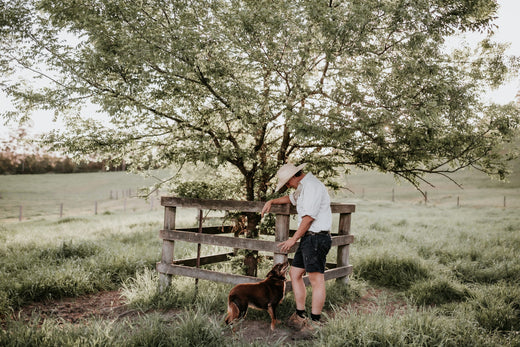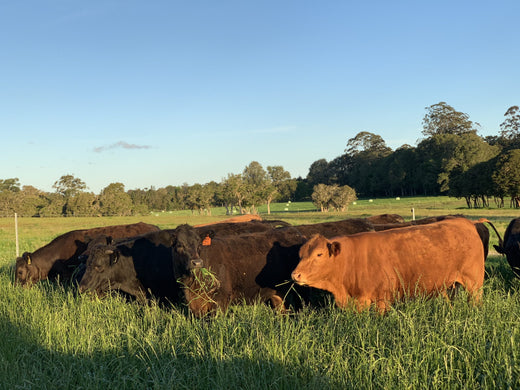There’s been a lot of buzz recently around regenerative farming (also known as regenerative agriculture); and for good reason. As the climate crisis worsens and our understanding of the impact of agriculture on climate change deepens, documentaries like Netflix’s Kiss the Ground are opening our eyes to current realities and new solutions.
We’re collectively starting to understand that regenerative farming has the power to help ensure a viable future for all.
It’s a proven path to mitigating climate change, to cultivating more resilient land, and to produce superior, nutrient-dense food. It also has the incredible potential to help feed the billions of people who rely on the Earth’s ecosystems for survival.
Here at The Food Farm, we farm small and local, but think global. We put regenerative agriculture at the core of our farming ethos to not only produce incredibly delicious, nutrient-dense food for you, but also to play our part in the global shift towards regenerative agriculture and a future with healthy, thriving, balanced ecosystems.
So what exactly is regenerative farming?
Regenerative farming is a way of working with nature’s own perfect cycles and processes, cultivating biodiversity and letting the circle of life flow as it should.
This differs from large-scale, conventional farming, which focuses on efficiencies at the cost of a life well-lived for the animal ,and respect for the ecosystem surrounding the farm. As passionate regen-farmers, you’ll find us planting lots of trees, visiting and moving our animals every day and having a face to face connection with all of our customers.
Regenerative farming combines ancient knowledge, constant observation and the mimicking of nature’s own processes to raise animals in a way that actually improves the land, the soil and the overall ecosystem. As regenerative farmers we see ourselves as custodians of the land, there to care for and improve it for generations to come.

It’s fair to say that when it comes to agriculture, what’s better for the land is better for the farmer, the animal, the planet, and you.
How does regenerative agriculture work?
There are three key principles that we follow as part of our regenerative farming practice:
- Going beyond sustainability to facilitate the soil, the land and our ecosystem to thrive and leave it in a better condition for future generations of farmers.
- Letting our animals express their natural behaviours and eat a nourishing, diverse diet of lush, organic pasture.
- Taking a wholistic view of farming and it’s positive impact on our local community and those that we feed – connecting our customers to where their food comes from and allowing them to experience the farm first hand
At the practical level here at The Food Farm, this means:
- Going completely chemical, antibiotic and hormone free
- Constantly observing our animals, the land and the environment and adjusting our farming methods to suit
- Taking a holistic view of the farming and wider environment and acknowledging the role that diversity plays in keeping the cycle moving – biodiversity is key and nature must be allowed to run its course, letting cycle naturally through the system
- Moving our animals every couple of days to allow our pasture to rest, rejuvenate and regenerate.
- Having transparency in the way we do things – we invite all of our customers to come and see the farm for themselves and to form an intimate connection with how their food is produced
Applying these methods means investing more time and greater care in our farming processes, but the result is transformative – for the land, the animal, the food you eat, and for the planet.
Tackling climate change, one regenerative farm at a time
One of the most remarkable benefits of regenerative agriculture is its ability to mitigate climate change. The methods we use at The Food Farm actually build healthier soil, part of which means building carbon within the soil.
Yes, healthy soil can actually sequester carbon from the atmosphere, counteracting the effects of climate change (how cool is that!).
As a bonus, soil that is rich in carbon can also help to hold more moisture and nutrient in the ground, helping to make farms more resilient in droughts and help to restore natural water cycles to what they once were.
We’ve seen regenerative agriculture return barren, dry, nutrient-depleted soil to healthy, productive land, improving the farmer’s productivity and profitability.
It’s fair to say that when it comes to agriculture, what’s better for the land is better for all.
So how do we help shift the needle towards regenerative agriculture?
The proof is in the pudding – regenerative agriculture cultivates better environmental outcomes, a better life for the animal and better food for you. You as a consumer have the power to help shift the needle toward the kind of future we all want.
At The Food Farm we are deeply committed to being part of the regenerative farming revolution, and welcome you to stop by the farm to see the effects of this approach for yourself – happy, healthy animals, rich, biodiverse soil, and incredibly delicious, nutrient-dense food that nourishes your family the way nature intended.





